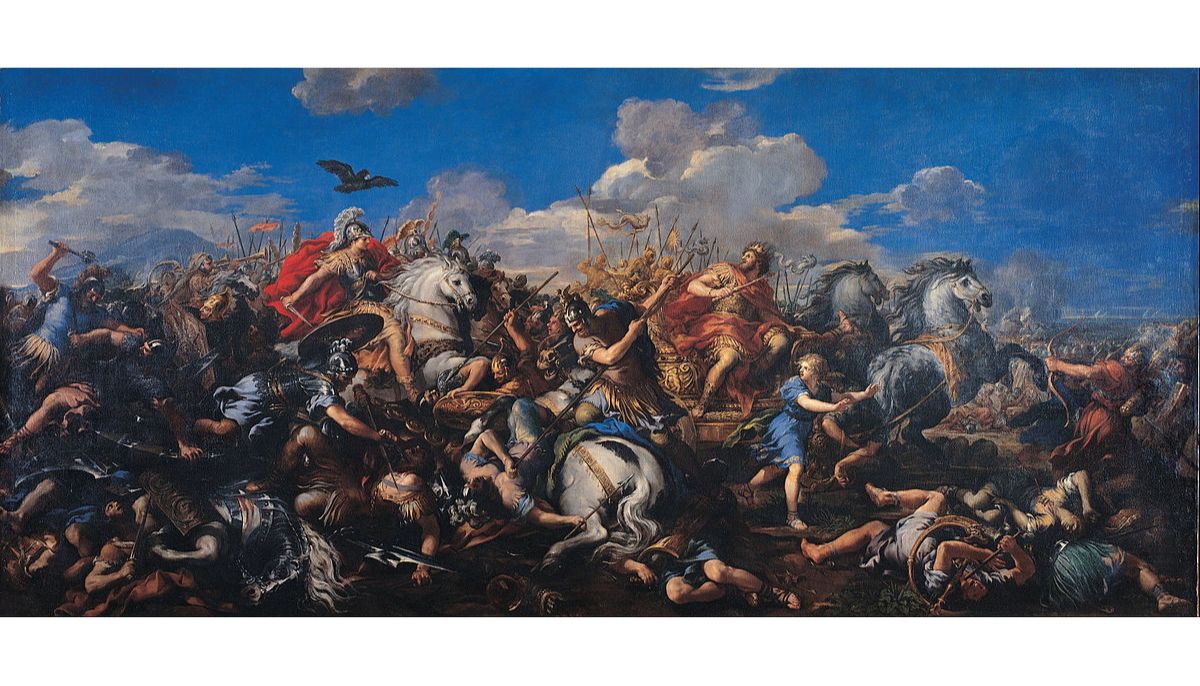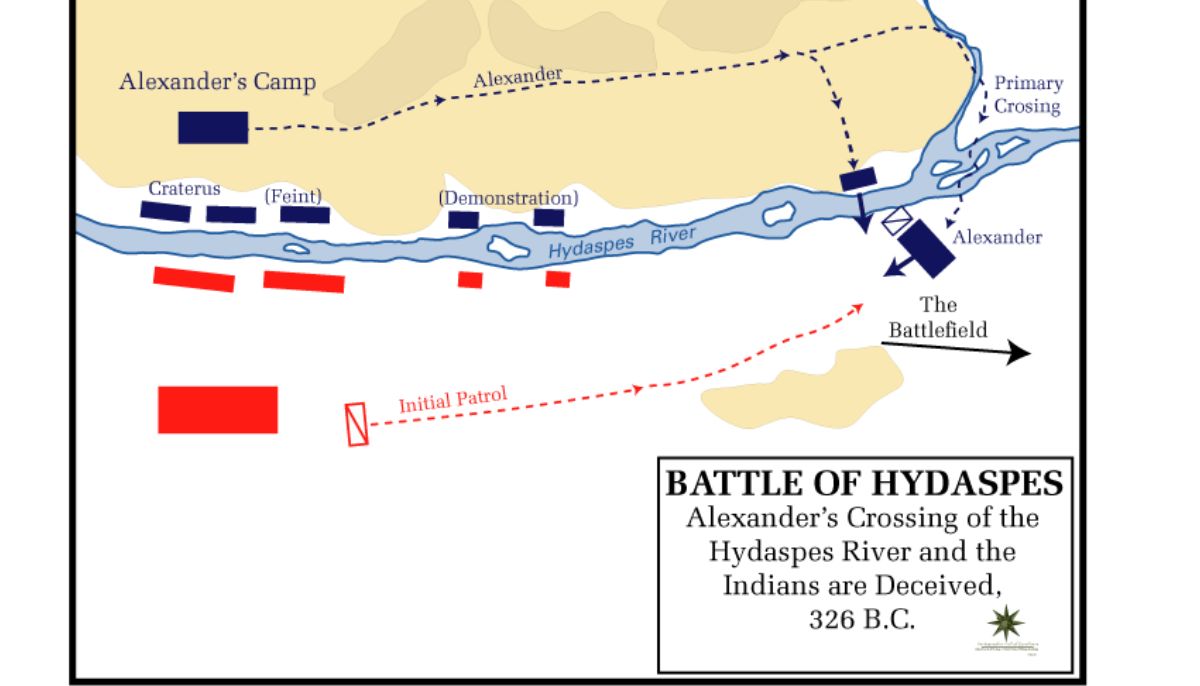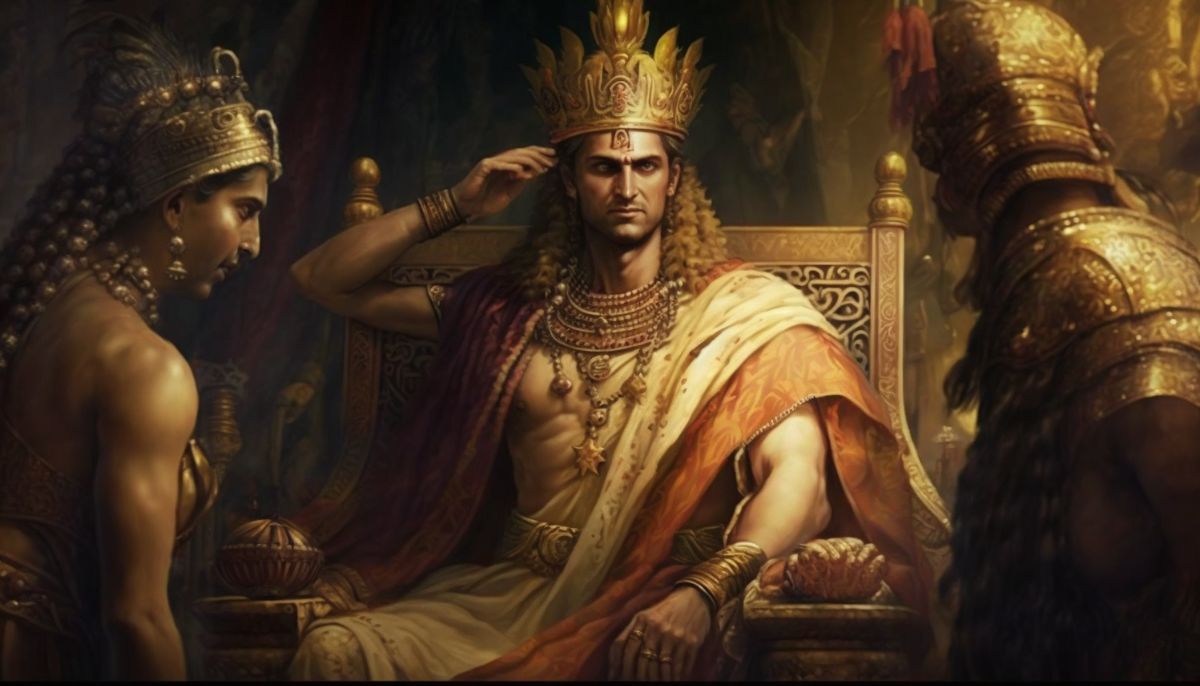Could Alexander the Great have conquered India? That’s a question that has intrigued minds for centuries.
With a legendary army known for tactical brilliance and unwavering loyalty, Alexander seemed unstoppable.
However, India wasn’t just another conquest. It presented unique challenges, from formidable war elephants to potential mutinies within his ranks.
Join us as we dissect the elements that defined his army’s greatness and the formidable barriers India posed. Prepare to embark on a journey to an era of epic battles and towering personalities!
What made Alexander the Great’s army so dangerous?

Before exploring whether Alexander the Great could have conquered India, we must first understand what made his army great. Alexander’s military conquests are legendary, and much of his success can be attributed to the extraordinary prowess of his army.
By examining the key elements that contributed to the greatness of Alexander’s army, we can gain insight into how he achieved his many victories. This understanding is crucial if we hope to assess whether or not Alexander could have added India to his list of conquests.
Military reforms under Phillip II
Many consider Philip of Macedon’s military reforms the foundation of Alexander the Great’s military success.
After spending three years in his youth in Thebes, Philip was deeply influenced by the military reforms of the Theban general, Epaminondas.
When Philip came to power in 359 BC, he set out to remodel the Macedonian army, copying and adapting many of the Theban army’s tactics and strategies.
Philip made four fundamental changes that revolutionized the Macedonian army.
1. Focus on the infantry
First, he shifted the focus from the cavalry to the infantry. Previously, Macedonia had relied heavily on its powerful cavalry.
However, Philip realized the potential of the Macedonian phalanx and professionalized the infantry. He also introduced new weapons, including the famous sarissa spear, which was six meters long and became synonymous with the Macedonian army.
2. Lighter weapons and armor
Second, Philip reduced the weight of the army and weaponry. The military could move faster and cover greater distances by making the soldiers and equipment lighter.
This gave the Macedonians a significant advantage over their enemies, often weighed down by heavy armor and weapons.
3. Focus on the fighting
Third, Philip removed the wives and large baggage trains accompanying the army on campaigns. This streamlined the military and significantly increased its speed and focus.
4. Hammer and anvil tactics
Finally, Philip developed specialized units and tactics, including the famous “hammer and anvil” strategy. This involved using heavily armed infantry (the “anvil”) to hold the enemy in place while the cavalry (the “hammer”) attacked from the side, creating a devastating blow.
How the Terrain of the Persian Empire Suited the Macedonians

The terrain of the Persian Empire during Alexander’s time was varied, with both flat and mountainous regions. However, the open plains of Mesopotamia, the heartland of the Persian Empire, provided the perfect battleground for the Macedonian phalanx.
The flat and open terrain allowed the Macedonian infantry to form into their tight phalanx formation, with each soldier carrying a sarissa. The Sarissa allowed the Macedonian soldiers to keep their enemies at a safe distance.
This was especially effective against Persian cavalry charges, which were often broken up by the long spears of the Macedonian phalanx.
Want to know more about Alexander the Great?
- Alexander the Great in Egypt
- The Story of Alexander and the Gordian Knot
- Alexander the Great’s fascination with Zeus-Ammon
- Who were Alexander the Great’s lovers?
- Where is Alexander the Great buried?
- The wild conspiracy theory that Alexander is buried in St. Marks explained
The terrain at the Battle of Hydaspes

In contrast to the Persian campaigns, the terrain at the Battle of Hydaspes, where the Macedonians suffered heavy casualties, was vastly different.
The battle occurred on the Hydaspes River’s banks, surrounded by dense forests and steep hills. This made it difficult for the Macedonian cavalry to maneuver and prevented them from effectively using their “hammer and anvil” tactics.
If every battle in India was this difficult, how long could the Macedonians last?
The challenges of a Macedonian invasion of India

Now that we better understand the tactics and strategies that made Alexander the Great successful in his conquests, we can evaluate whether he could have conquered India.
With its diverse terrain, formidable armies, and war elephants, India posed unique challenges that Alexander had not encountered before.
India at the time of Alexander the Great
The political situation in India during Alexander the Great was complex and fragmented, with many different kingdoms vying for power and influence.
Two of the most notable powers during this time were King Porus in the north and the mighty Nanda Empire to the south.
King Porus
King Porus was a powerful ruler who controlled the region of Punjab in northern India. He had already fought a bloody and grueling battle against Alexander at the Battle of Hydaspes.
He was ultimately defeated but still negotiated favorable terms for his surrender. Despite losing the battle, Porus earned the respect of Alexander for his bravery and skill on the battlefield.
Nanda Empire

To the south of Punjab was the Nanda Empire, one of the most powerful empires in India at the time.
The Nandas were known for their wealth and military might, with a vast army and a sophisticated administration system.
They were ruled by King Dhana Nanda, known for his cruelty and oppression of his subjects.
The terrain of India
The terrain of India posed significant challenges to any invading army, and Alexander the Great’s army was no exception. The region of Punjab, where the fighting between Alexander and King Porus took place, was known for its varied terrain and extreme climate.
The Punjab region is located in the northwestern part of the Indian subcontinent and is characterized by a mix of flat plains and rugged, mountainous terrain. The terrain includes vast rivers, dense forests, and marshy swamplands, making it difficult for armies to traverse and navigate.
In addition to the rugged terrain, the region’s climate could also be extreme. The summers in Punjab could be scorching hot, reaching 45°C (113°F). Conversely, the winters could be bitterly cold, with temperatures dropping below freezing.
These challenging conditions could be particularly difficult for an invading army like Alexander’s, which relied heavily on mobility and speed to overcome opponents. The Macedonian soldiers were not accustomed to the extreme heat and humidity of the region and were also not equipped to deal with the harsh winter conditions.
The Indian War Elephants

The use of war elephants in ancient Indian warfare was a significant threat to any invading army, and the Macedonian army was no exception. The elephants were a powerful and intimidating force on the battlefield, capable of devastating the Macedonian phalanx formation.
In Indian warfare, the elephants were often armored and equipped with sharp blades or spikes, making them an almost impenetrable force on the battlefield. They were trained to charge straight into enemy formations, breaking them apart and causing chaos and confusion.
During the battle of the Hydaspes River, King Porus had a significant number of war elephants in his army. Despite his initial success in pushing back Porus’s forces, Alexander soon struggled to deal with the elephants.
While the Macedonians eventually overcame Porus’s army, it was a costly victory. The Macedonians suffered heavy casualties, and many historians believe the war elephants played a significant role in their losses.
Seleucus I Nicator’s war elephants
Later, after Alexander’s death, one of his generals, Seleucus, received 500 war elephants as a gift from the Indian emperor Chandragupta Maurya. Seleucus used these elephants to devastating effect against the successor kingdoms of Alexander the Great. Infantry is no match for these ancient super weapons.
The motivation of the Macedonian Army
One of the significant challenges that Alexander the Great would have faced if he had chosen to invade India again was the motivation of his army.
After the Battle of Hydaspes, the Macedonian army had already mutinied due to exhaustion and the campaign’s difficulties. They were thousands of miles from home and had little interest in India, which they saw as a foreign and hostile land.
The Macedonian soldiers’ ultimate goal was to conquer Persia, which they had already achieved under Alexander’s leadership. Even if Alexander could raise new armies, he would have lost the experience and battle-hardened soldiers who had fought with him in Persia and other campaigns.
So, Could Alexander the Great have conquered India?

Despite the challenges that Alexander the Great would have faced in attempting to conquer India, it is still possible that he could have achieved significant gains in the region.
However, he would have had to return to Babylon and regroup his forces, as his army was weary and depleted from years of campaigning.
Alexander would form an Alliance with King Porus

In addition, Alexander would have had to form political alliances with some Indian forces, likely including King Porus, with whom he had already established a political relationship during his previous campaign.
This would have enabled him to gain local support and intelligence on the Indian political landscape.
The collapse of the Nanda Empire
A critical factor that could have worked in Alexander’s favor was the imminent collapse of the Nanda Empire. This empire was already facing significant challenges to its rule, including widespread popular discontent and the emergence of powerful regional rulers challenging its authority.
If Alexander and Porus had formed a coalition, they might have been able to exploit this political instability and make significant territorial gains in the region.
The political strength of Alexander the Great
Furthermore, if Alexander had followed his political strategies from his campaigns in Persia and left some political structures in place, he could have gained popularity among the Indian population, especially as the Nanda Empire was not a popular regime.
This would have enabled him to consolidate his rule over conquered territories and establish a significant political presence in the region.
So, do you agree with us after exploring the challenges Alexander the Great would have faced?
Could Alexander have conquered India? Or was it simply too difficult a task?
Let us know what you think, and until then, we’ll continue to marvel at the incredible feats of one of history’s greatest conquerors!
Like this? Check out our other alternate history articles:






